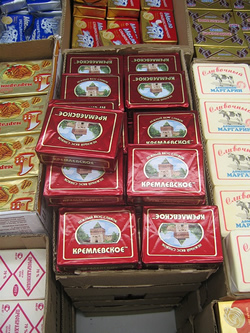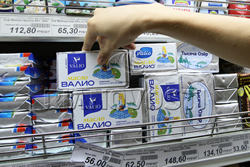Maslyanitsa means butter in Russian, and it is also the name of the festival that says goodbye to winter and welcomes summer. From Moscow to St. Petersberg, Russians celebrate Butter Week just before their Lent fast days. Monday is the high point of celebration, when people cook pancakes, or blini, served with honey, caviar, fresh cream and butter. The more butter there is, the hotter the sun is expected to be in the coming summer.
Russians in the regions of Uzbek, Bashkir, and Kirgiz still drink mares' and donkeys' milk and turn it into kumyss, a powerful fermented liquor or spirit, often served with lumps of butter in it. Kumyss is mentioned in reports from Christian missionaries in central Siberia in 1253; Marco Polo wrote in 1298 that Genghis Khan kept a stable of ten thousand white horses for the production of kumyss. This is probably the same drink as the oxygala ("sharp milk") which the ancient Greeks knew from the horse‑riding and "butterophagous" Scythians. Herodoms had reported that the Scythians used to blind their slaves and then make them sit round wooden barrels full of marcs' milk and "stir them round and round; the stuff that rises to the top is skimmed, and considered more valuable than what sinks to the bottom." The Scythians ate horse meat and horse butter and drank horse buttermilk and oxygala, using strainers to remove the scum; many of these strainers of bone, and kumyss or oxygala jars with sieves built into them, have been found in Scythian tombs, together, sometimes, with the tattooed bodies of the Scythians themselves, preserved in the icy soil of central Russia.
Help grow this exhibit with your photos! WebExhibits helps connect people and cultures, and you can join in by sending photos of butter from your part of the world. Read more about sharing your photos.


